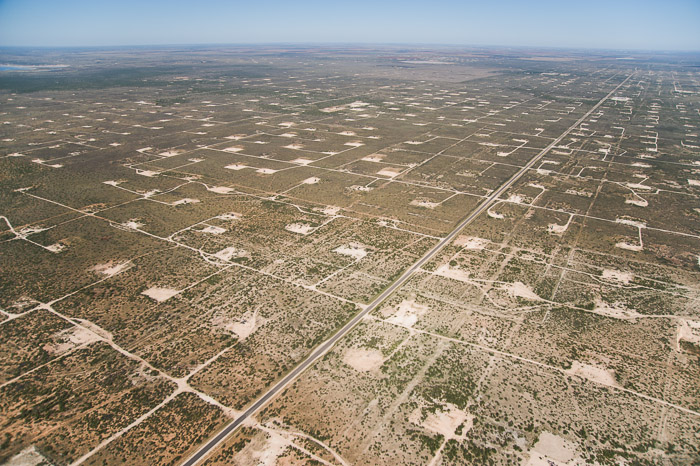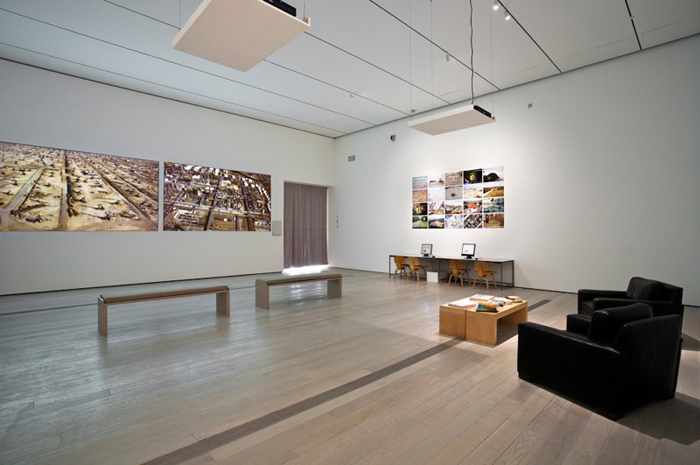Steve Rowell
Texas Oil: Landscape of an Industry
2008-09
In collaboration with the Center for Land Use Interpretation.
From the petroleum fields of West Texas, to the refineries and plastics plants clustered around the Gulf Coast, the petrochemical network of the nation converges on Texas, the home state of the Oil Industry. In ways the industry is like the space program, but it is larger in magnitude. It focuses on inner space: extracting the deepest essence of the Earth, unlocking the carbon from a distant prehistorical past, to use for consumption today, now. From the oil exploration, drilling, and services companies in the “upstream” realm, to the conveyance, storing, refining and processing activities “midstream” and “downstream,” these Texas-based corporations, through their innovations, and the products they collectively bring into being, have shaped the earth, sea, sky, and humanity, forever. Taken together, an inventory of the major petrochemical sites in Texas is a portrait of the reigning territory at the pinnacle of our Age of Oil.




The Houston Petrochemical Corridor Landscan is an unedited, 14-minute shot of the ground, from a flight over the nation’s parallel universe of oil production, which begins just east of Houston–from the East 610 Loop to the Highway 146 Bridge. The work was procured using a high definition video camera inside a gyro-stabilized ball mounted on the nose of a helicopter. The route was scouted and directed by members of the CLUI, and was shot by Ron Chapple, an aerial videographer. The drone was created by Kevin Doherty, of the UK-based musical group Sleep Research Facility. His 2008 album Nostromo features imagined sounds of the intergalatic refinery / spaceship from the science-fiction horror film, Alien.
The video Houston Petrochemical Corridor Landscan (above as the monochromic 2021 edit) has been showed many times over the years, but the most notable in context to the man-altered landscape was from October 2009-January 2010 at LACMA's revisiting of the seminal exhibition: New Topographics: Photographs of a Man-Altered Landscape.
More at CLUI
On the Banks of Bayou City publication:
Published to coincide with the CLUI exhibit at the Blaffer Art Museum Texas Oil: Landscape of an Industry at the culmination of their residency with the Mitchell Center for the Arts, this book contains interviews with CLUI founder/director Matthew Coolidge and program managers Steve Rowell and Erik Knutzen, as well as a photographic essay on land use in Houston, a panoramic, foldout section and a comprehensive chronology of the CLUI’s projects and publications over the past 14 years. Edited by Rachel L. Hooper and Nancy L. Zastudil. 2009, Blaffer Art Museum of the University of Houston.
CLUI Gulf Coast Field Office Established in Houston: Though the CLUI’s year-long focus on oil wrapped at the end of 2009, before leaving Houston they established a semi-permanent Gulf Coast Field Office to support regional programming. An exhibit area has been installed inside the field office trailer, housing an exhibit about the industrial end of the Buffalo Bayou, and Houston’s petrochemical corridor. The exhibit is open by appointment 713.743.1519.
Nationwide CLUI Bench Mark program initiated along the Buffalo Bayou: Houston marks the spot of the first in a series of Bench Mark overlooks. Bench Marks are viewing areas that have been selected to encourage passer bys to sit for a spell and watch as what is happening in the landscape. This first Bench Mark is on a newly paved walking trail that runs along the banks of Buffalo Bayou, at a spot with the panoramic view of the Proler Southwest metal scrap operation.